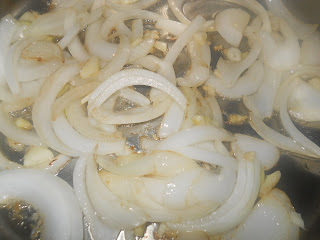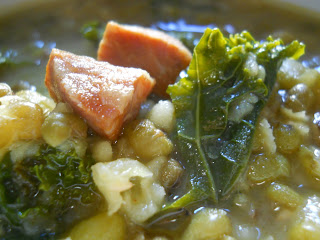
I love Mug Beans! The health benefits are out of this world! See below and read about the 5 top benefits of Mung Beans I found online. Here is a simple, delicious, stick to your ribs goodness!
1 Onion, Sliced
4-5 Garlic, Chopped
2-3 Tablespoons Coconut Oil
1 Link Sausage, Linguica, Italian, Kielbasa, or Vegan
1 Cup Dry Mung Beans
1 Whole Kale Bunch, Stemmed and Chopped
12 Cups of Water
1 Teaspoon Sea Salt
1 Teaspoon Dry Oregano
Heat oil and start cooking the onions and garlic. Cook for approx 3-4 minutes.
Add the sausage and cook for another 2-3 minutes.
Add the mung beans and the water.
Bring to a boil and then simmer for 30 minutes...
Add the Kale...
Simmer for another 15 minutes...
This soup is wonderful!!!
For thousands of years, mung beans have been used for a variety of purposes. Mung beans originated in India and were cultivated throughout Asia. The ancient Chinese used mung beans for culinary and medicinal purposes such as dispelling heat and detoxifying the body. Today mung beans are still being used for culinary and health purposes due to the beans’ high nutritional content and value.
Cholesterol
If you have high cholesterol you may benefit from eating mung beans daily. Mung beans are low in cholesterol and high in soluble dietary fibers. Dietary fiber refers to certain food particles that cannot be digested. Dietary fiber comes in two forms: soluble and insoluble. Insoluble fiber aids in normalizing bowl movements, but it does not do much for lowering blood pressure. Soluble fiber when mixed with water in the digestive tract will form a gel-like material, which in turn aids in supporting essential bodily functions.
Foods rich in soluble dietary fibers are shown to help lower LDL cholesterol (bad cholesterol) by encouraging the production of LDL receptors that are responsible for removing excess LDL cholesterol out of the blood stream. It is recommended to consume 10 to 25 g of soluble fiber per day to reduce the amount of LDL cholesterol. Mung beans contain 1.9 g of total dietary fiber per cup. Mung beans may be combined with other dietary fiber-rich foods to further lower LDL cholesterol levels.
Breast Cancer
Mung and other type of beans contain protease inhibitors. Protease inhibitors slow the replication of certain cancer cells including those found in breast cancer. Protease inhibitors are known to block and prevent formation of tumor cells.
Post-Menopause
Beans such as the mung bean variety contain isoflavone Nutrients Isoflavones help regulate hormonal activity. Isoflavones are a class of phytoestrogen, making mung beans estrogenic in nature. Mung beans contain about 495.1 µg of phytoestrogen content, making mung beans a good source of phytoestrogen.
In a 12-week trial, phytoestrogen was shown to relieve hot flashes that are often disruptive and unpleasant. Potentially taking 90 mg per day of phytoestrogens may benefit post-Menopausal women in preventing the often devastating effects of osteoporosis by stimulating bone formation.
Diabetes
Mung beans are a low glycemic index food, which means the beans are a diabetic friendly food. Low glycemic foods promote healthy blood sugar levels. People who eat foods that have a low glycemic index tend to have lower total body fat levels as opposed to those who consume high-glycemic foods, such as white bread and soft drinks. In recent studies, mung beans have shown promise in reducing blood glucose, plasma C-peptide, glucagon and blood urea nitrogen levels in non-human type-2 diabetic subjects. In the study, mung bean sprouts and mung bean seed coats were consumed for a total of five weeks before reaching a conclusion.
Protein
Mung beans contain approximately 3.16 g of protein per cup. While meat is still one of the best sources of protein at 7 g per ounce, mung beans and vegetable based foods have far less saturated fat and cholesterol than certain meats.





































































